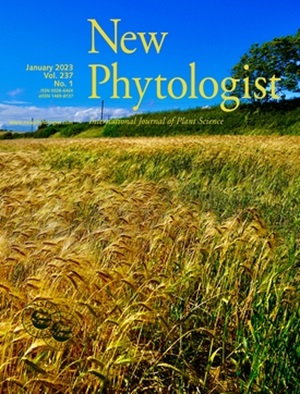‘Chimes of resilience’: what makes forest trees genetically resilient?
IF 8.3
1区 生物学
Q1 PLANT SCIENCES
引用次数: 0
Abstract
SummaryForest trees are foundation species of many ecosystems and are challenged by global environmental changes. We assemble genetic facts and arguments supporting or undermining resilient responses of forest trees to those changes. Genetic resilience is understood here as the capacity of a species to restore its adaptive potential following environmental changes and disturbances. Importantly, the data come primarily from European temperate tree species with large distributions and consider only marginally species with small distributions. We first examine historical trajectories of trees during repeated climatic changes. Species that survived the Pliocene–Pleistocene transition and underwent the oscillations of glacial and interglacial periods were equipped with life history traits enhancing persistence and resilience. Evidence of their resilience also comes from the maintenance of large effective population sizes across time and rapid microevolutionary responses to recent climatic events. We then review genetic mechanisms and attributes shaping resilient responses. Usually, invoked constraints to resilience, such as genetic load or generation time and overlap, have limited consequences or are offset by positive impacts. Conversely, genetic plasticity, gene flow, introgression, genetic architecture of fitness‐related traits and demographic dynamics strengthen resilience by accelerating adaptive responses. Finally, we address the limitations of this review and highlight critical research gaps.求助全文
约1分钟内获得全文
求助全文
来源期刊

New Phytologist
生物-植物科学
自引率
5.30%
发文量
728
期刊介绍:
New Phytologist is an international electronic journal published 24 times a year. It is owned by the New Phytologist Foundation, a non-profit-making charitable organization dedicated to promoting plant science. The journal publishes excellent, novel, rigorous, and timely research and scholarship in plant science and its applications. The articles cover topics in five sections: Physiology & Development, Environment, Interaction, Evolution, and Transformative Plant Biotechnology. These sections encompass intracellular processes, global environmental change, and encourage cross-disciplinary approaches. The journal recognizes the use of techniques from molecular and cell biology, functional genomics, modeling, and system-based approaches in plant science. Abstracting and Indexing Information for New Phytologist includes Academic Search, AgBiotech News & Information, Agroforestry Abstracts, Biochemistry & Biophysics Citation Index, Botanical Pesticides, CAB Abstracts®, Environment Index, Global Health, and Plant Breeding Abstracts, and others.
 求助内容:
求助内容: 应助结果提醒方式:
应助结果提醒方式:


